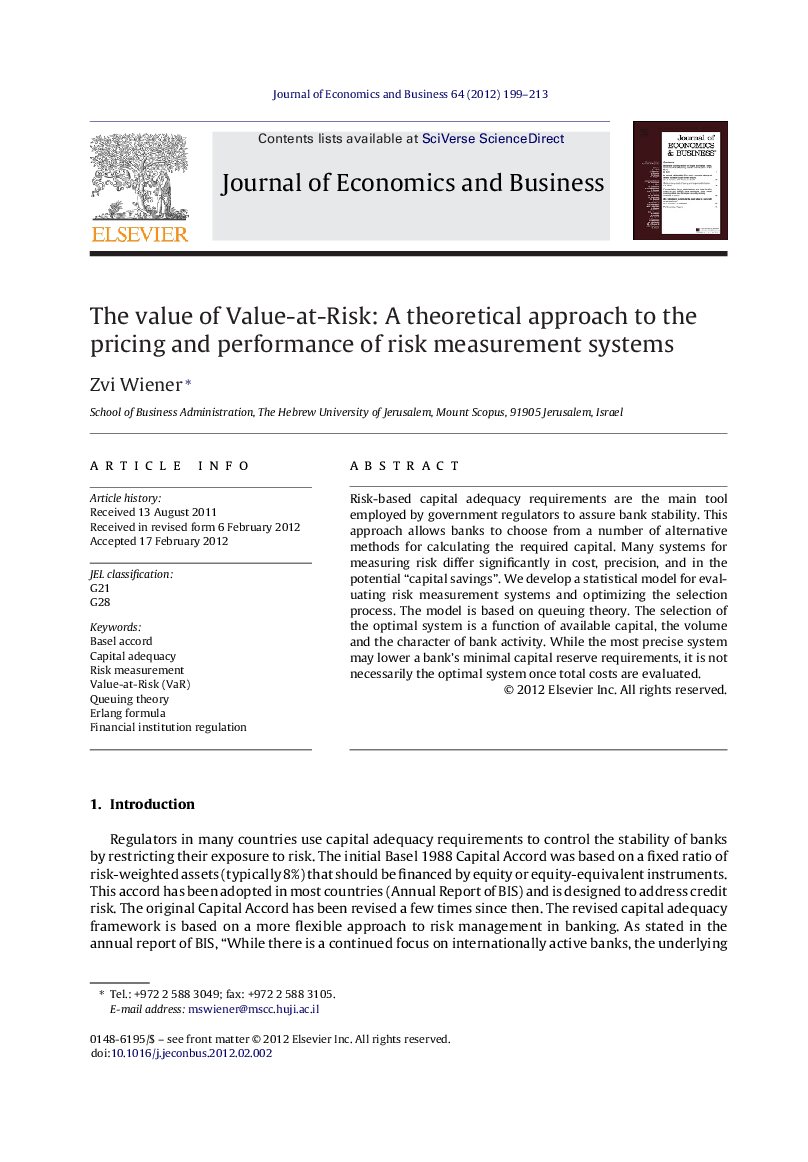| Article ID | Journal | Published Year | Pages | File Type |
|---|---|---|---|---|
| 958009 | Journal of Economics and Business | 2012 | 15 Pages |
Risk-based capital adequacy requirements are the main tool employed by government regulators to assure bank stability. This approach allows banks to choose from a number of alternative methods for calculating the required capital. Many systems for measuring risk differ significantly in cost, precision, and in the potential “capital savings”. We develop a statistical model for evaluating risk measurement systems and optimizing the selection process. The model is based on queuing theory. The selection of the optimal system is a function of available capital, the volume and the character of bank activity. While the most precise system may lower a bank's minimal capital reserve requirements, it is not necessarily the optimal system once total costs are evaluated.
► We develop a statistical model for evaluating risk measurement systems and optimizing the selection process of a risk measuring model for a bank. ► The model is based on queuing theory and its main parameters include available capital, the volume and the character of bank activity. ► While the most precise system may lower a bank's minimal capital reserve requirements, it is not necessarily the optimal system once total costs are evaluated.
